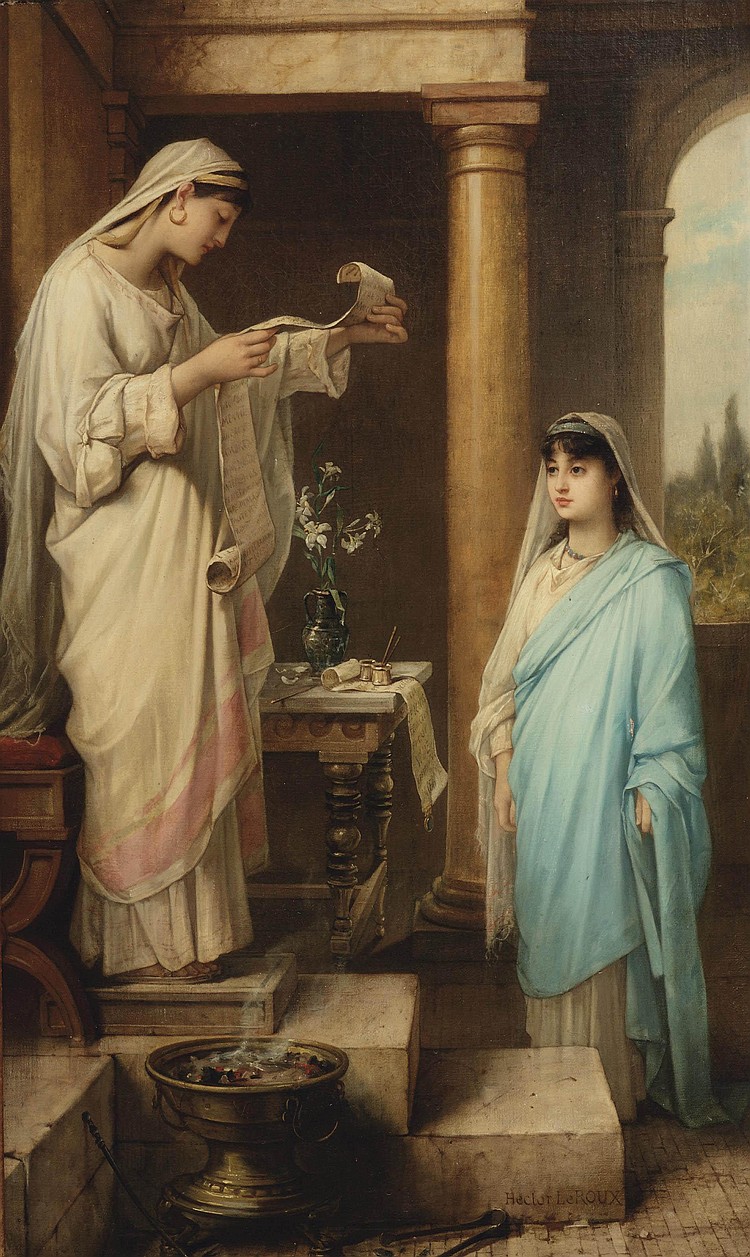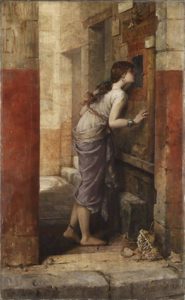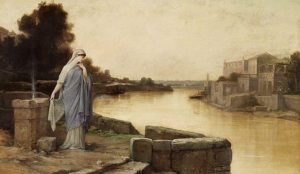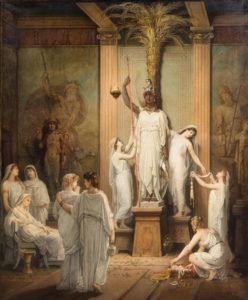Louis Héctor Leroux was born on December 27, 1829 in France. He was an academic painter, meaning that his style was influenced by European art academies. It was the Académie des Beaux-Arts which defined what the academic style should mean, combining elements of Neoclassicism and Romanticism under the influence of William-Adolphe Bouguereau, Thomas Couture, and Hans Makart. One common theme amidst academic art was the focus on allegory, and artists placed great importance on the development of skills in order to portray allegory well. The artwork was to be a concrete representation of something greater, a glimpse of the eternal through the lens of something tangible. A single figure, for instance, would represent a greater idea, capturing the essence of whatever lay behind it. The artwork was idealized, not necessarily depicting reality as we see it but the greater possibilities which could be. People would be painted at their most beautiful; landscapes would be breath-taking. Written mythology strove to accomplish the same goal of giving the reader a glimpse into something beyond human perceptions, and so mythology was often considered to be the greatest subject matter for such artwork.
Leroux was an artist of the academic style, painting mythological, classical, historical, and biblical subjects. A few more of his masterpieces are shown below.




